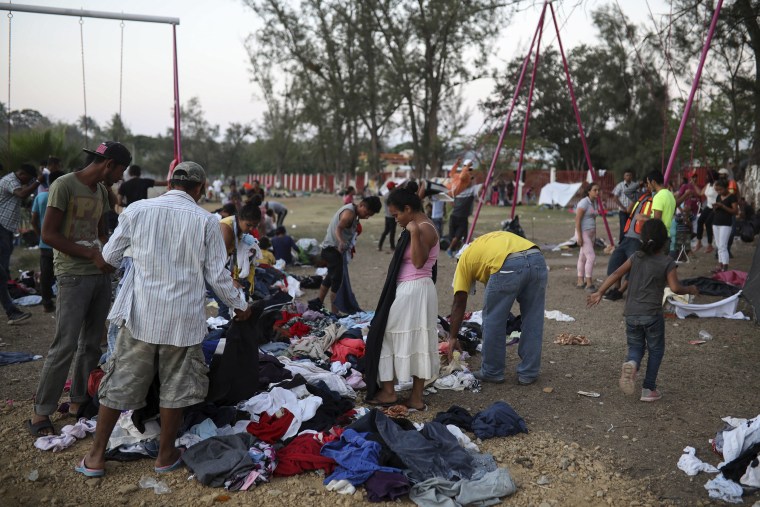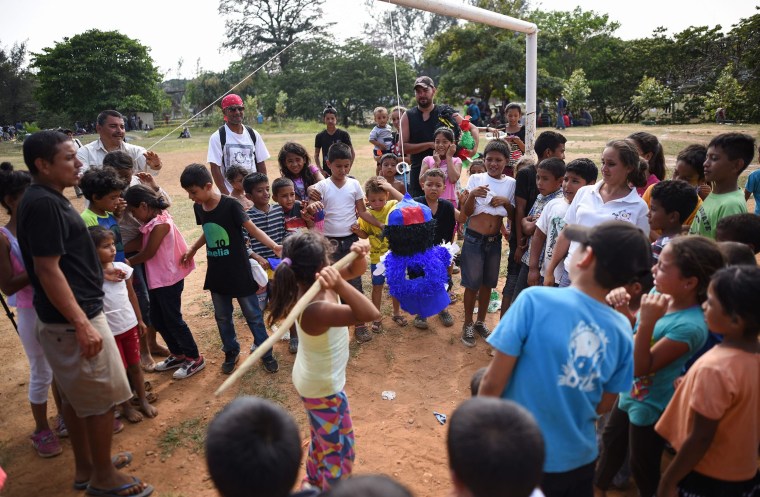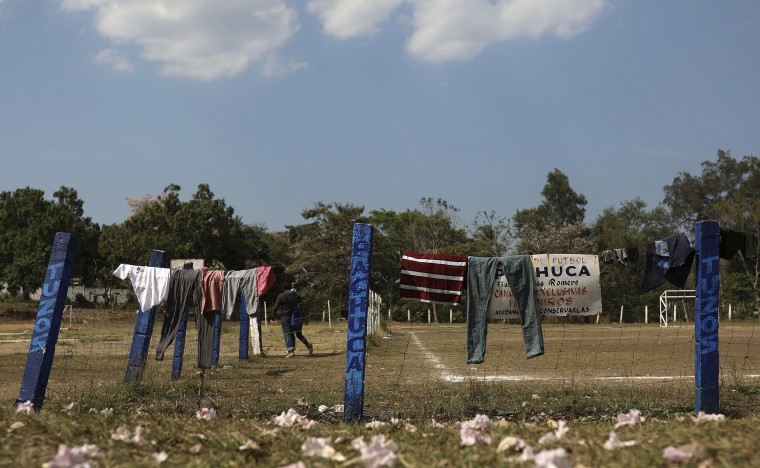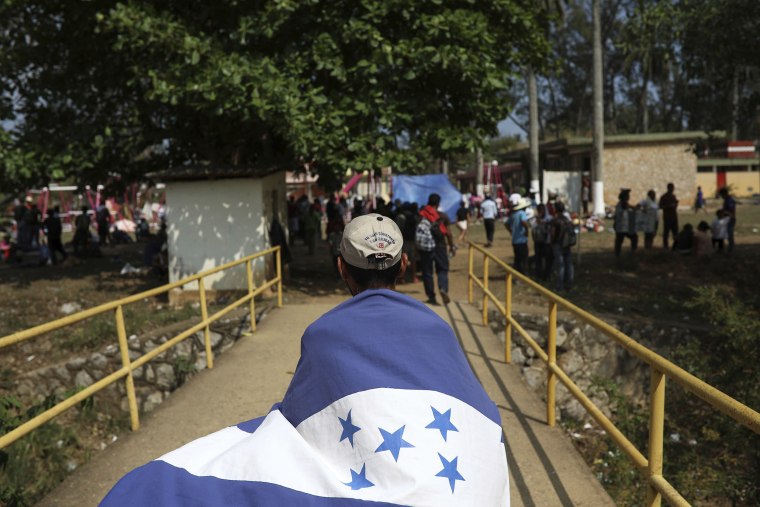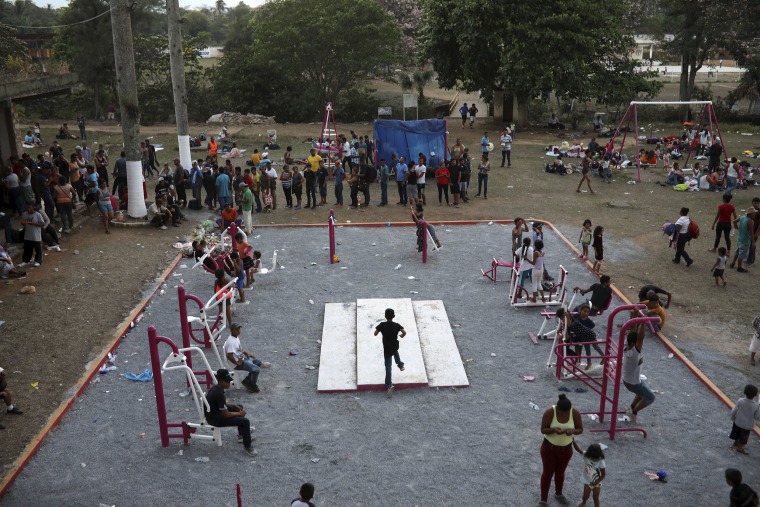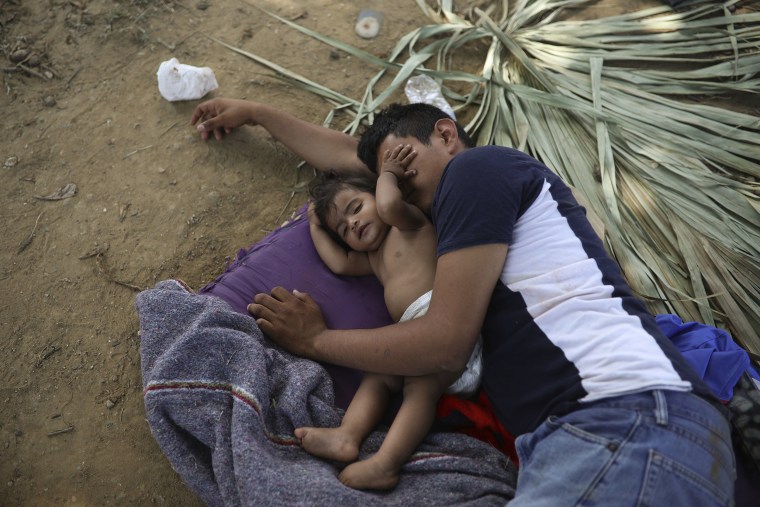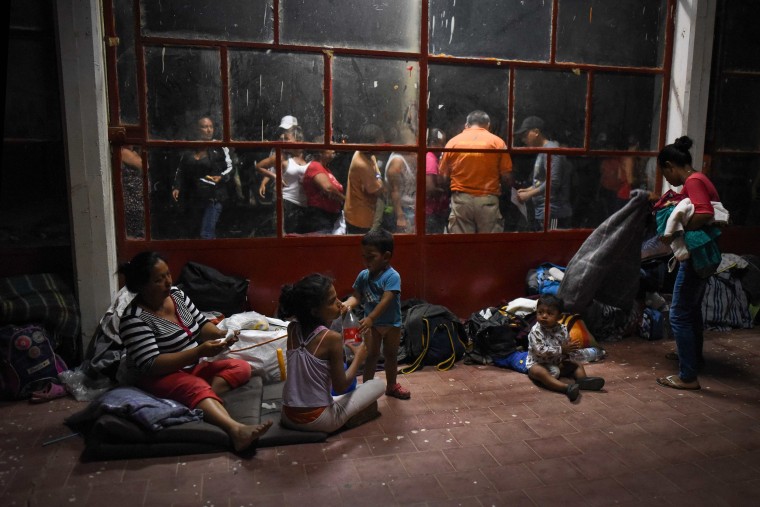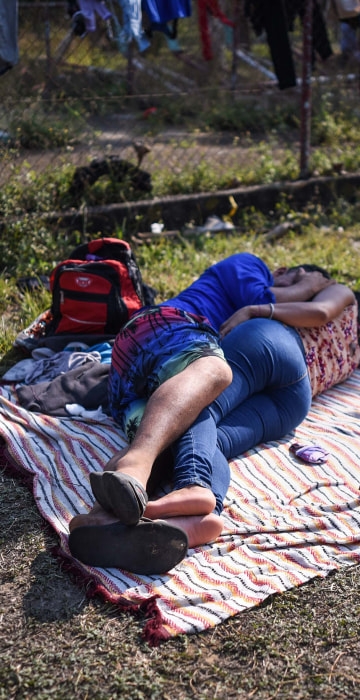
In Focus
Migrant caravan, targeted by Trump, slows to a standstill in southern Mexico
Annual migrant caravans, guided by an activist group, are at the center of a Trump tweetstorm on immigration.
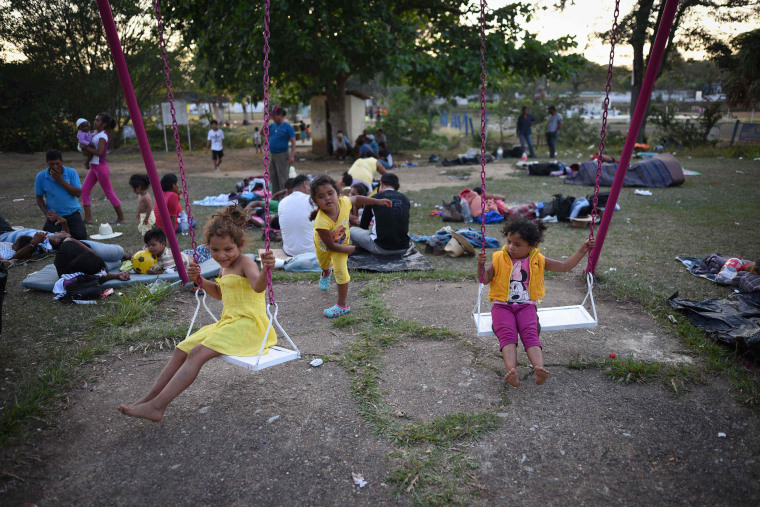
Migrant children play next to a sports field in Matias Romero, Oaxaca State, Mexico, on Monday.
The caravan of Central American migrants that angered President Donald Trump was sidelined at the field in southern Mexico with no means of reaching the border even as Trump tweeted another threat to Mexico on Tuesday.
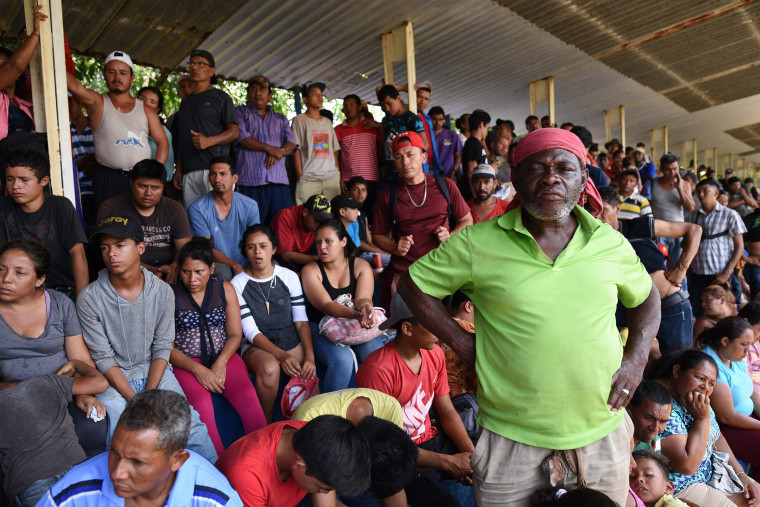
The group of about 1,100 people, most of them Hondurans, had been walking along roadsides and train tracks, but they have stopped to camp out at the sports field in Oaxaca. They are waiting and getting advice on filing for transit or humanitarian visas in Mexico.
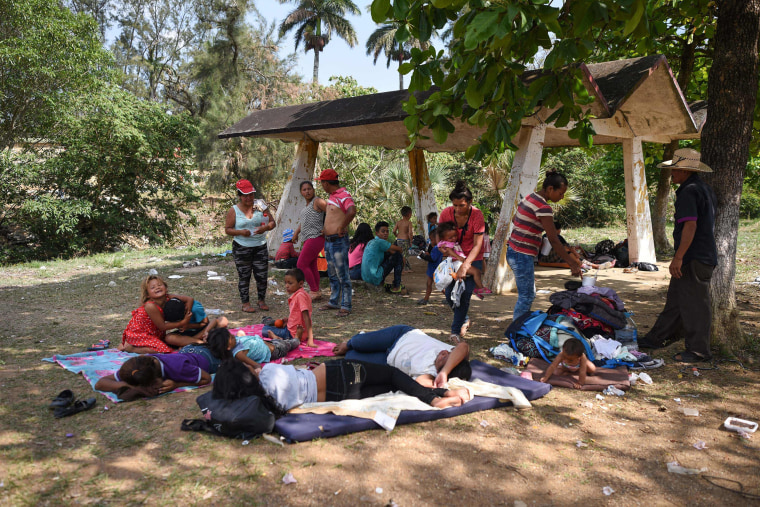
While a group of about a couple of hundred men in the march, an annual symbolic event, broke off and hopped a freight train north on Sunday, the rest seem unlikely to move until Wednesday or Thursday, and are probably going to take buses to the last scheduled stop for the caravan, a migrant rights symposium in central Puebla state.
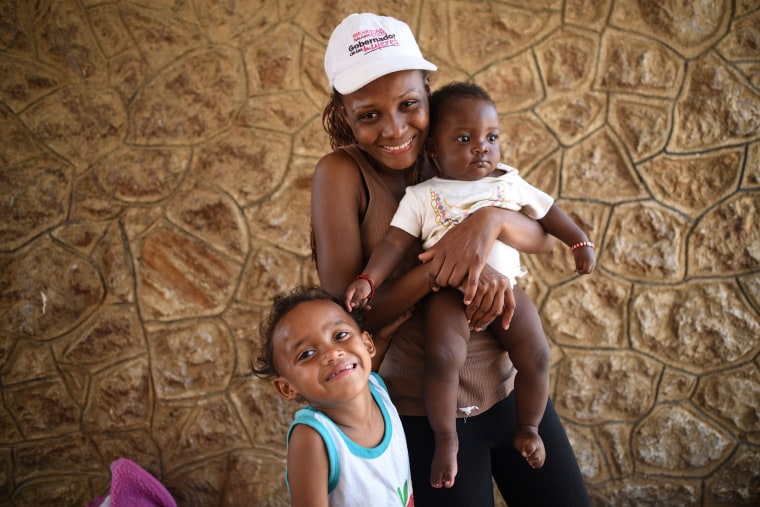

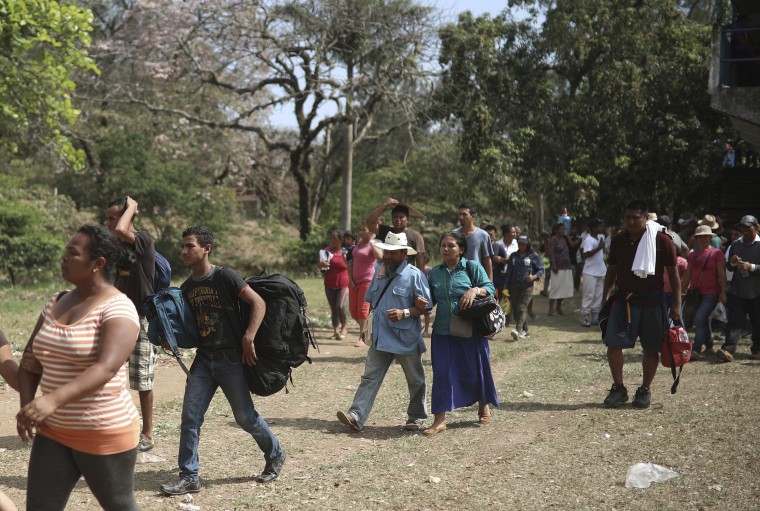
The "Stations of the Cross" migrant caravans have been held in southern Mexico for about 10 years. They began as short processions of migrants, some dressed in biblical garb and carrying crosses, as an Easter-season protest against the kidnappings, extortion, beatings and killings suffered by many Central American migrants as they cross Mexico.
The organized portions of the caravans usually don't proceed much farther north than the gulf coast state of Veracruz, while some migrants, moving as individuals or in smaller groups, often take buses or trucks from there to the U.S. border.
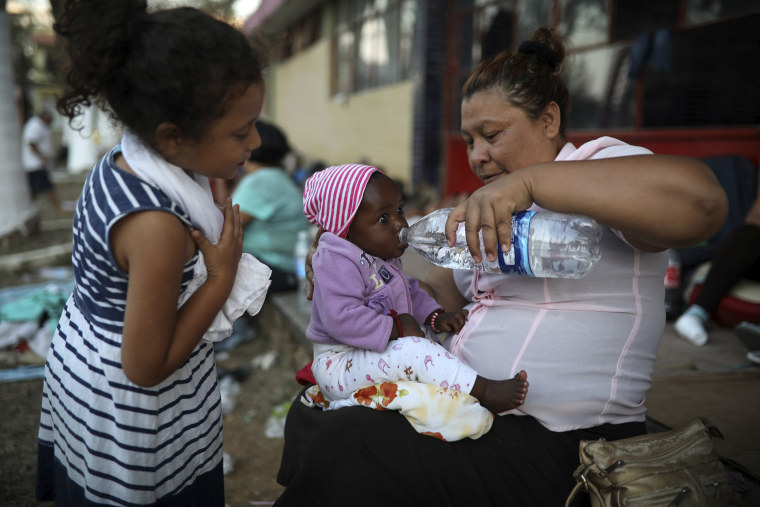
While there were reports that Mexico was seeking to end the caravan, it was for all intents and purposes over. The participants were never equipped to march en masse to the U.S. border or anywhere near it. The large number of children present made any move against the camp unlikely.
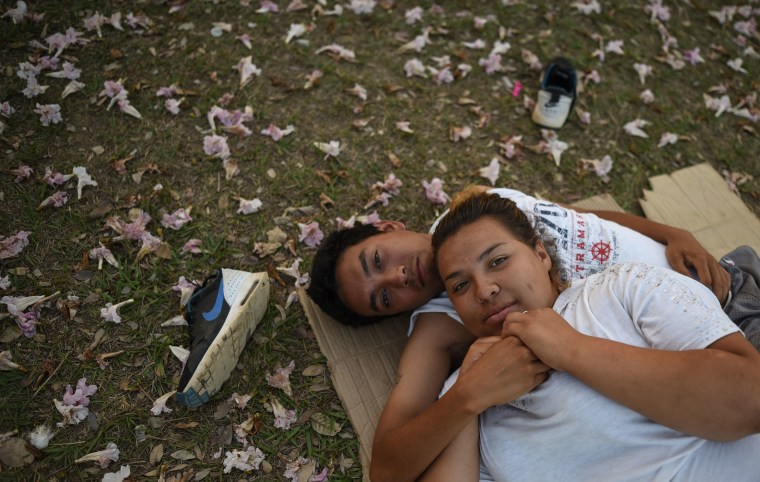
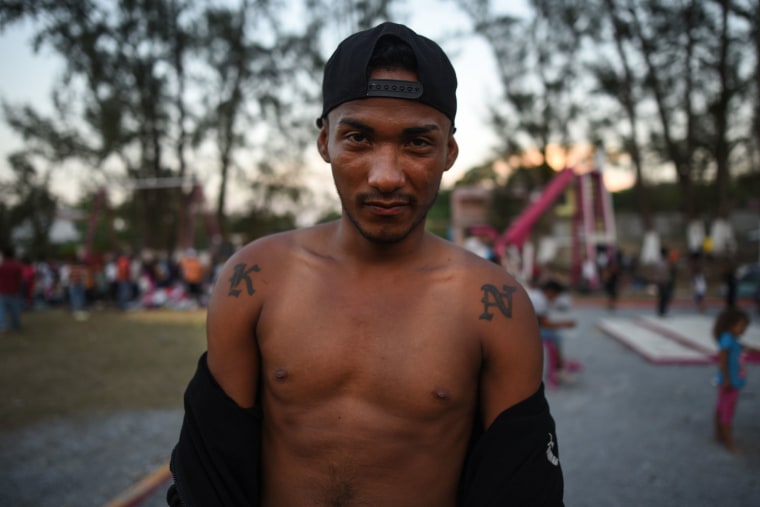
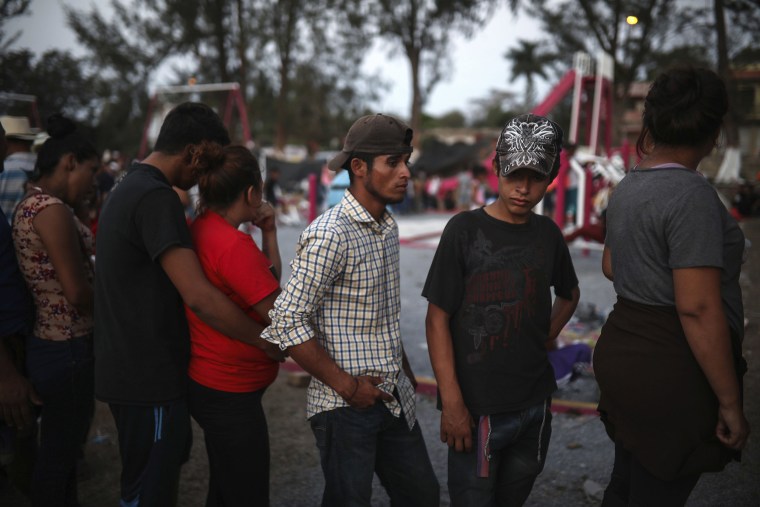
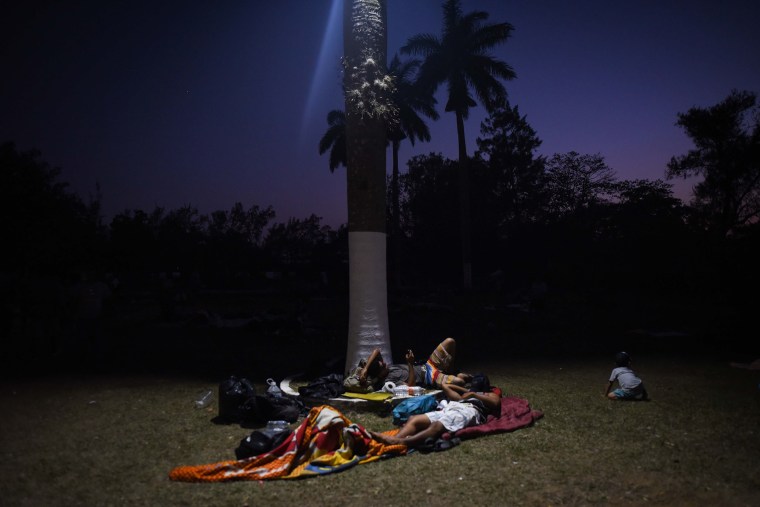
People rest where they can at the temporary camp.
Read: Trump says 'caravans' of immigrants are headed for the U.S. What's he talking about?

